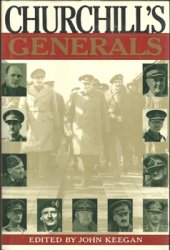The grand strategy of the Truman administration focused on binding the industrial core areas of Western Europe and Northeast Asia to the United States. But officials increasingly realized that success in these core areas depended on containment in the underdeveloped periphery. Just as Western Europe depended on access to the petroleum of the Middle East and the natural resources of former and current colonial possessions in Asia and Africa, so, too, did Japan’s rehabilitation depend on supplanting its former ties with Manchuria, North China, and Korea with new markets and raw materials in Southeast Asia.
When Mao Zedong consolidated Communist power on the Chinese mainland and when Congress allocated new funds to thwart the spread of Communist influence in the area around China, US Army and State Department officials agreed that they should use the money to fight Communists and revolutionary nationalists in Southeast Asia.91 Stalin’s pact with Mao in January 1950 and his recognition of Ho Chi Minh’s government in Indochina appeared portentous. Acheson deemed Ho a mortal enemy of the
United States. Although the secretary of state knew that Ho had the support of the majority of the Vietnamese people, the United States established formal diplomatic ties with Bao Dai, the French-backed puppet emperor. Linking the United States to the remnants of French colonialism was not something that Truman and Acheson wanted to do, but they felt they had little choice given the trend of events. "From our viewpoint," Acheson said in May 1950, "the Soviet Union possesses [a] position ofdomination in China which it is using to threaten Indochina, push in Malaya, stir up trouble in the Philippines, and now to start trouble in Indonesia."92
Acheson’s perception of threat in the periphery was greatly influenced by the Soviet detonation of an atomic bomb in August 1949. Heretofore, US officials had believed the Soviets would back down should a grave confrontation occur. The Berlin crisis appeared to confirm the veracity of this assumption. Now, with the atomic bomb, the Soviet penchant for risk-taking might increase. Stalin might even become bolder ifthe Soviets developed a hydrogen bomb, potentially many hundreds of times more powerful than the atomic weapons the United States possessed. The "blackmail" potential of the hydrogen bomb, US officials concluded, was "tremendous." Should the Soviets develop it, the Americans might hesitate to take the steps necessary to rebuild and integrate West Germany, sign a peace treaty with Japan, or contain Mao’s attempts to support Ho’s Communists in Vietnam. In other words, atomic and hydrogen weapons were critical for the shadows they cast in peacetime. Truman resolved that the United States should develop its own hydrogen bomb, and requested a study of the nation’s goals and strategy in view of the Kremlin’s new capabilities.93
George Kennan opposed the growing stress on strategic weaponry, but his influence waned as Acheson gathered stature and asked Paul Nitze to take charge of the Policy Planning Staff. Nitze conducted the comprehensive reexamination of US strategy that the president had requested. In the most renowned strategic paper of the Cold War, NSC 68, Nitze reiterated many of the axioms that had guided US policy in the first years of the Cold War. The Soviet Union, he wrote, was animated by a "new fanatical faith, antithetical to our own." The Kremlin, he claimed, wanted to impose its "absolute authority over the rest of the world." Nitze, like Kennan, did not anticipate that Stalin would engage in overt aggression. But he did think that the Kremlin would use its growing military prowess and atomic arsenal to neutralize US diplomatic initiatives. This was portentous when Washington still faced formidable challenges. It had to negotiate a peace treaty with Japan, link West Germany to NATO, preserve stability in the Middle East, and thwart the spread of Communism in Southeast Asia. To move ahead on these matters, Nitze emphasized, the United States had to have "an adequate military shield." "Without superior aggregate military strength," he argued in NSC 68, "a policy of containment - which is in effect a policy of calculated and gradual coercion - is no more than a policy of bluff."39
The goals of US strategy, as outlined in NSC 68, were not different than those Kennan had stated in the document he penned eighteen months before, NSC 20/ 4. In both documents, the aim was not containment. US goals were far more ambitious: "to reduce the power and influence of the USSR to limits which no longer constitute a threat to the peace, national independence and stability of the world family of nations" and "to bring about a basic change in the conduct of international relations by the government in power in Russia, to conform with the purposes and principles set forth in the UN charter." What distinguished NSC 68 was its stark delineation of threat and its pronounced stress on rearmament. "Only if we had overwhelming atomic superiority and obtained command of the air might the USSR be deterred from employing its atomic weapons as we progressed toward the fulfillment of our objectives," Nitze wrote in NSC 68.40
President Truman embraced the strategy of NSC 68 in May 1950, but hesitated to say how much it would cost. He knew it would stir a contentious debate at home when he was already being vilified for his failures in China and for his alleged indifference to internal espionage. Conservative critics, led by Republican senator Joseph McCarthy ofWisconsin, assailed the president for losing China and harboring Communists inside his administration. Actually, Truman, Marshall, Acheson, and Kennan had weighed intervention in China carefully and calculated that direct military intervention would be too costly and unlikely to succeed. They had no illusions about Mao, but in their view China was too poor, too fractious, and too unstable to add materially to Soviet strength. Hence, they had eschewed intervention, but had not abandoned their global struggle against Communism. 94 95
Acheson’s chief concern in Asia was not the loss of China. He was concerned that Mao would aid Ho in Indochina, thereby endangering Japan’s access to the markets and resources of Southeast Asia. In a famous speech in January 1950 to the National Press Club, Acheson talked about the United States' strategic perimeter and stressed the importance of retaining Japan, Okinawa, and the Philippines. He did not include South Korea, Indochina, and Southeast Asia. But he was not indifferent to their fate. The strategic perimeter encompassed the areas that were deemed essential to wage war. Yet Acheson was far more interested with winning the peace and achieving preponderant power without war. As for the funds that Congress allocated in early 1950 for the containment of Communism in Asia, Acheson wanted to use them in Indochina, South Korea, and Southeast Asia rather than Formosa.




 World History
World History









